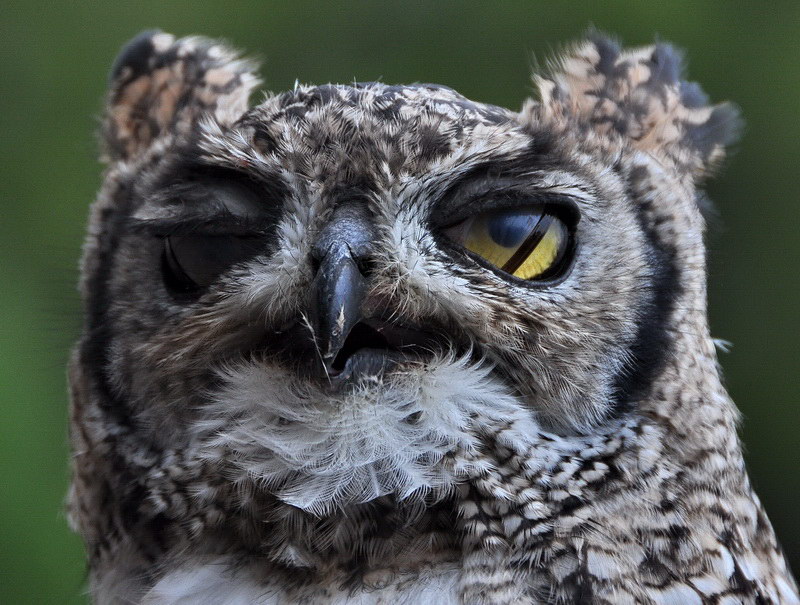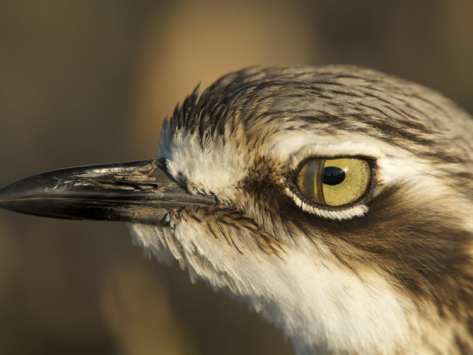Human Owl Eyes


I have an etheric membrane that crosses my eye. It’s known as a nictitating membrane, which is common in owls and fish, and in polar bears who have it to protect them from snow blindness. The membrane first came across from the outside of my eyes towards my nose, as pictured here on this bird, but in later years it has come down vertically covering my eye from the top of the eye downwards to the lower lid.
When it crosses my eyes, my sight of reality beyond is ok, though a bit dimmed. Strangely it is not there all the time, or if it is, I’m not aware of it, but it has gotten stronger over the years as the membrane has gotten thicker. Since I don’t dive to catch fish–tee hee, I wondered what purpose the etheric membrane serves.
There are over 960 levels in the hell worlds. The upper levels are quite bright so one can see very well, but as you journey deeper, it soon becomes pitch black. I noticed that when I was down there a form of night vision glasses kicked in to allow me to see. It would be impossibly dangerous fighting down there if one couldn’t see, as the reptiles are at the bottom of the hell worlds.
It takes twenty minutes to get down the 960 levels; it’s like going down in an elevator, and it takes four to six hours to get out again back to the top. This is because you go down un-oppposed, but coming back out again you have to fight all the way since by then the ghouls know you are there.

So I decided the nictitating membrane over my eyes is linked to seeing in the dark, and then the membrane also acts as a drop-down screen upon which visions are shown. There is so much we humans don’t know. For me, one of the great joys of life is learning new things. On an Ayahuasca journey, it’s common for one to morph into an animal or a bird. Once I felt myself 6-8 feet tall all covered in feathers. I was an owl perched in a tree looking down on the forest below. The sensation lasted many hours even after the Aya’ journey ended. The alternative Gaia worlds are so interesting… and so liberating. Stuart Wilde. www.stuartwilde.com
Normal vision is 20:20, mine’s 20:10 so it is inherently by birth more acute, the highest recorded in humans is 20:8 and a hawk has eyesight of 20:2
From Wiki
The nictitating membrane (from Latin nictare, to blink) is a transparent or translucent third eyelid present in some animals that can be drawn across the eye for protection and to moisten it while maintaining visibility. Some birds, and sharks have full nictitating membranes a small, vestigial portion of the membrane remains in the corner of the eye. Polar bears have the eye to protect them from snow blindness. It is fften called a third eyelid or haw, it may be referred to in scientific terminology as the plica semilunaris, membrana nictitans or palpebra tertia.
 Fully developed nictitating membranes are found in fish, amphibians, birds and mammals, but are rare in primates.
Fully developed nictitating membranes are found in fish, amphibians, birds and mammals, but are rare in primates.
In humans, the plica semilunaris (also known as the semilunar fold) and its associated muscles are homologous to the nictitating membranes seen in some other mammals and other vertebrates. In most primate species, a plica semilunaris is present, although fully developed nictitating membranes can be found in lemurs and lorisoid primates.
Unlike the upper and lower eyelids, the nictitating membrane moves horizontally across the eyeball. It is normally translucent. In some diving animals, for example beavers and manatees, it moves across the eye to protect it while under water, and in these species it is transparent; in other diving animals, including sea lions, it is activated on land, to remove sand and other debris. This is its function in most animals. In birds of prey, it also serves to protect the parents’ eyes from their chicks while they are feeding them, and when peregrine falcons go into their 200-mile-per-hour (320 km/h) dives, they will blink repeatedly with their nictitating membranes to clear debris and spread moisture across the eyes. In polar bears, it protects the eyes from snow blindness. In sharks, it protects their eyes while the shark strikes at its prey. Woodpeckers tighten their nictitating membrane a millisecond prior to their beak impacting the trunk of a tree to prevent shaking-induced retinal injury.
